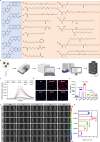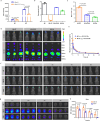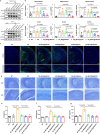Berberine-inspired ionizable lipid for self-structure stabilization and brain targeting delivery of nucleic acid therapeutics
- PMID: 40064874
- PMCID: PMC11893799
- DOI: 10.1038/s41467-025-57488-0
Berberine-inspired ionizable lipid for self-structure stabilization and brain targeting delivery of nucleic acid therapeutics
Abstract
Lipid nanoparticles have shown success in targeting major organs such as the liver, spleen, and lungs, but crossing the blood-brain barrier (BBB) remains a major challenge. Effective brain-targeted delivery systems are essential for advancing gene therapy for neurological diseases but remain limited by low transport efficiency and poor nucleic acid stability. Here, we report a library of ionizable lipids based on the tetrahydroisoquinoline structure of protoberberine alkaloids, designed to improve BBB penetration via dopamine D3 receptor-mediated endocytosis. These nanoparticles offer three key advantages: enhanced brain uptake, improved nucleic acid stability through poly(A) self-assembly, and minimal immunogenicity with inherent neuroprotective properties. In murine models, they demonstrate therapeutic potential in Alzheimer's disease, glioma, and cryptococcal meningitis. This berberine-inspired delivery system integrates precise receptor targeting with nucleic acid stabilization, offering a promising platform for brain-targeted therapeutics.
© 2025. The Author(s).
Conflict of interest statement
Competing interests: The authors declare no competing interests.
Figures







References
MeSH terms
Substances
LinkOut - more resources
Full Text Sources

